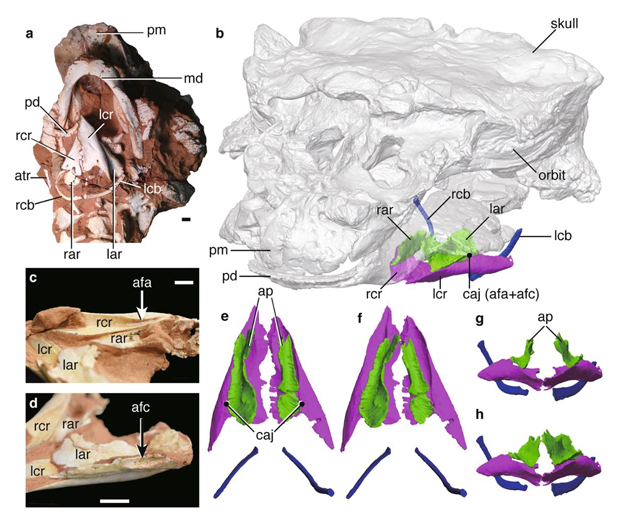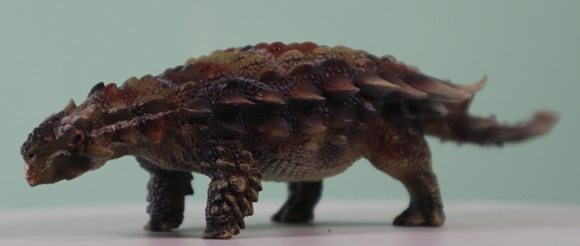Rare Pinacosaurus Larynx Provides Insight on Dinosaur Vocalisation
A team of scientists have been studying a Pinacosaurus larynx and have concluded that this armoured dinosaur was probably capable of producing a variety of sounds and calls.
A juvenile specimen of Pinacosaurus (P. grangeri), specimen number IGM100/3186, preserves a hyoid and two laryngeal elements (cricoids and arytenoids) in almost life articulation. From these remains the researchers have concluded that just like crocodilians and birds, Pinacosaurus was capable of producing a range of vocalisations. The calls may have had several functions, to alert others of a predator approaching, to threaten a predator, to define territory or to search for a mate. The sounds made by this ornithischian dinosaur may have been related to courtship, or perhaps helped to call offspring to their side.

Pinacosaurus grangeri
Pinacosaurus (P. grangeri) is regarded as a basal member of the Ankylosaurinae subfamily of ankylosaurs. It is known from copious fossil material, and it is one of the most extensively studied of all the Late Cretaceous Thyreophora. Fossils are known from the Mongolia and China (Djadokhta Formation and the geologically older Alagteeg Formation).

The image (above) shows a not-to-scale replica of Pinacosaurus (PNSO).
To view the range of PNSO dinosaur and prehistoric animal figures: PNSO Prehistoric Animal Models and Figures.
Pinacosaurus Larynx
In tetrapods the voice box (larynx) has several functions. It plays a role in respiration, protects the airway to prevent food items becoming lodged and it has a function in vocalisation. Fossil preservation of the larynx in archosaurs is extremely rare. The Pinacosaurus fossil material (IGM100/3186) represents the oldest voice box known to science. It provides scientists with an opportunity to better understand the evolution of the larynx in non-avian dinosaurs.

Vocal Armoured Dinosaurs
Ossification of the cricoid and arytenoid is confirmed in Pinacosaurus, and it has been reported in Saichania, another Asian ankylosaurine. This configuration is also found in extant birds. The complex arrangement of the hyolaryngeal apparatus led the researchers to conclude that it did not simply function as a barrier to preventing food entering the trachea (airway protection). It was specialised for opening the glottis and possibly acting as a sound modifier.
The voice box of modern birds and crocodilians differs. In crocodiles and their close relatives it is the larynx that produces sounds. In birds, the larynx forms part of the vocal tract but they have a specialised organ (syrinx) located at the base of the trachea (wind pipe), that produces sounds.
Pinacosaurus – Shared Anatomical Characteristics
The researchers suggest that Pinacosaurus retained the same hyolaryngeal elements as found in crocodilians. However, Pinacosaurus shows many shared characters with birds in the arrangement and morphology of the larynx.
The authors of the scientific paper, which was published this month in “Communications Biology” (Junki Yoshida, Yoshitsugu Kobayashi and Mark Norell), propose that Pinacosaurus did not use the larynx as a sound source like non-avian reptiles. The larynx probably worked as a sound modifier as found in birds
Furthermore, the authors postulate that bird-like vocalisation likely appeared in non-avian dinosaurs before the evolution of the Aves (birds).
Article sourced from the open-access paper in Communications Biology.
The scientific paper: “An ankylosaur larynx provides insights for bird-like vocalization in non-avian dinosaurs” by Junki Yoshida, Yoshitsugu Kobayashi, Mark A. Norell published in Communications Biology.

